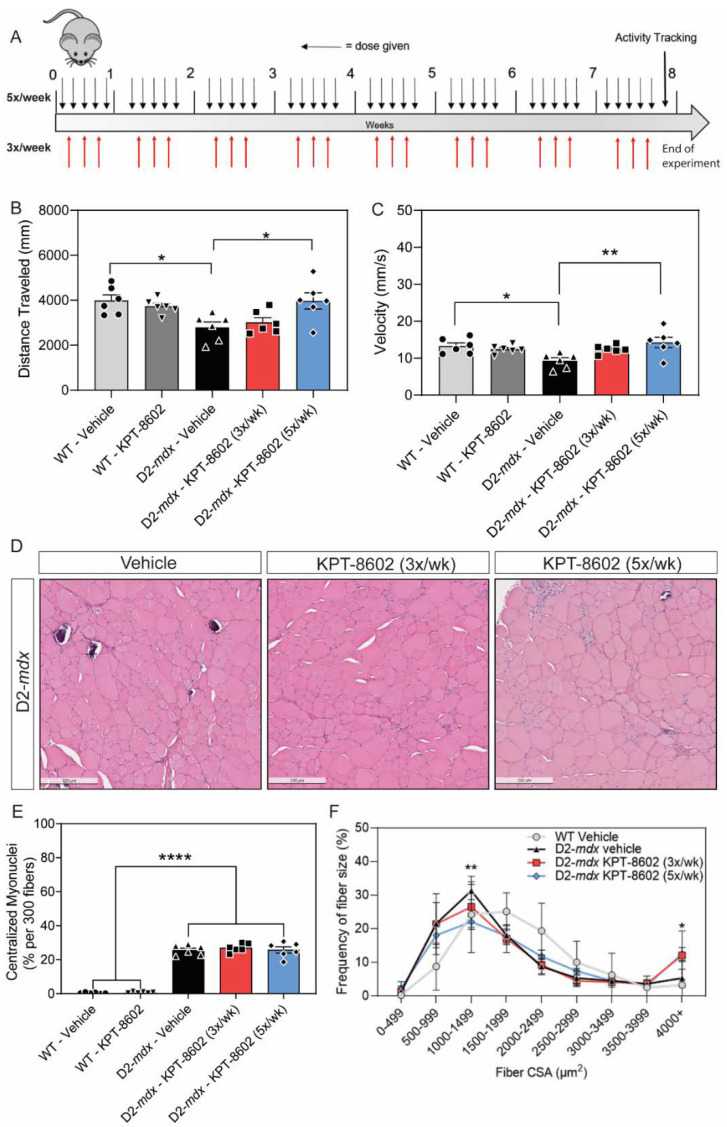Figure 2
KPT−8602 treatment improves basal locomotion and histological markers in DMD mouse muscle. (A) Schematic of mouse experiments illustrating the timeline of dosage in each condition and activity tracking (B,C). Graphs summarizing total distance traveled (B) and average velocity (C) in an open field test. KPT−8602 treatment in D2-mdx mice significantly increased total distance travelled and average velocity compared to vehicle-treated D2-mdx mice (data is presented as mean ± SEM, n = 6; * p < 0.05, ** p < 0.01; one-way ANOVA with Tukey’s HSD test); (D) Representative images of tibialis anterior (TA) muscles stained with H&E across D2-mdx mice treated with either vehicle, 3x/week KPT−8602 or 5x/week KPT−8602. Scale bar = 200 µm; (E) KPT−8602 treatment did not reduce the number of centralized myonuclei, which is significantly increased in DMD pathology (data is presented as mean ± SEM, n = 6; **** p < 0.0001; one-way ANOVA with Tukey’s HSD test); (F) Fiber size frequency distribution curves of the cross-sectional area of myofibers revealed that KPT−8602 treatment decreased the number of small fibers and increased number of large fibers, indicative of a hypertrophy response compared to D2-mdx vehicle (data points are presented as mean ± SEM, n = 6; * p < 0.05, ** p < 0.01; one-way ANOVA with Tukey’s HSD test).

